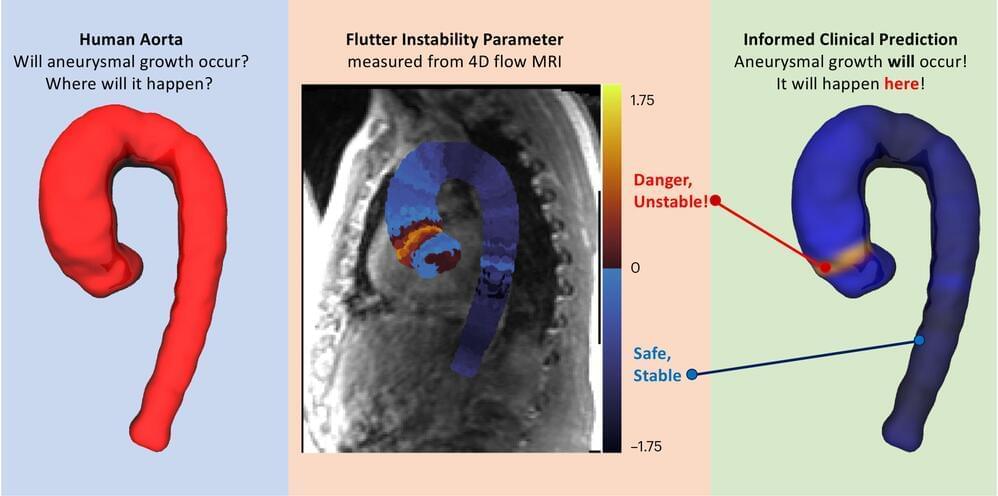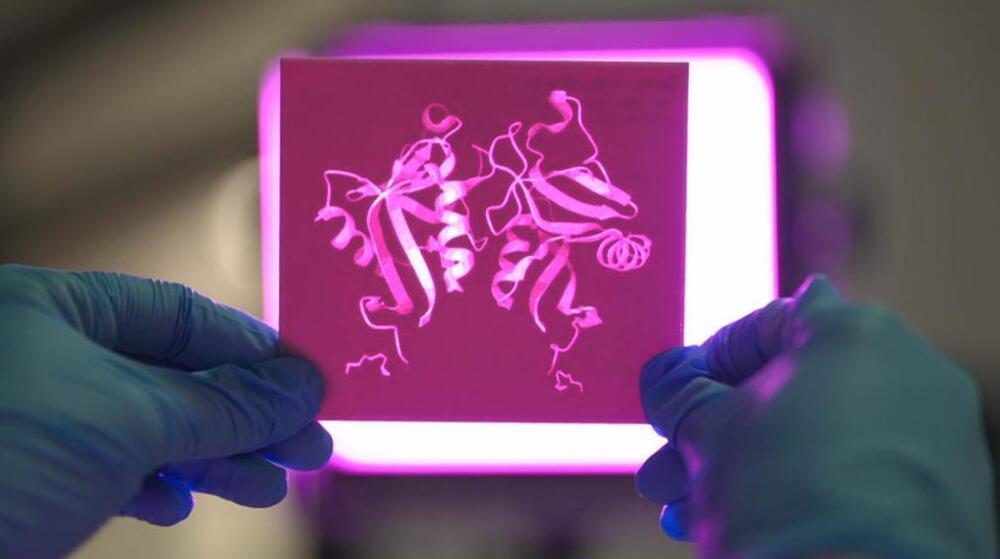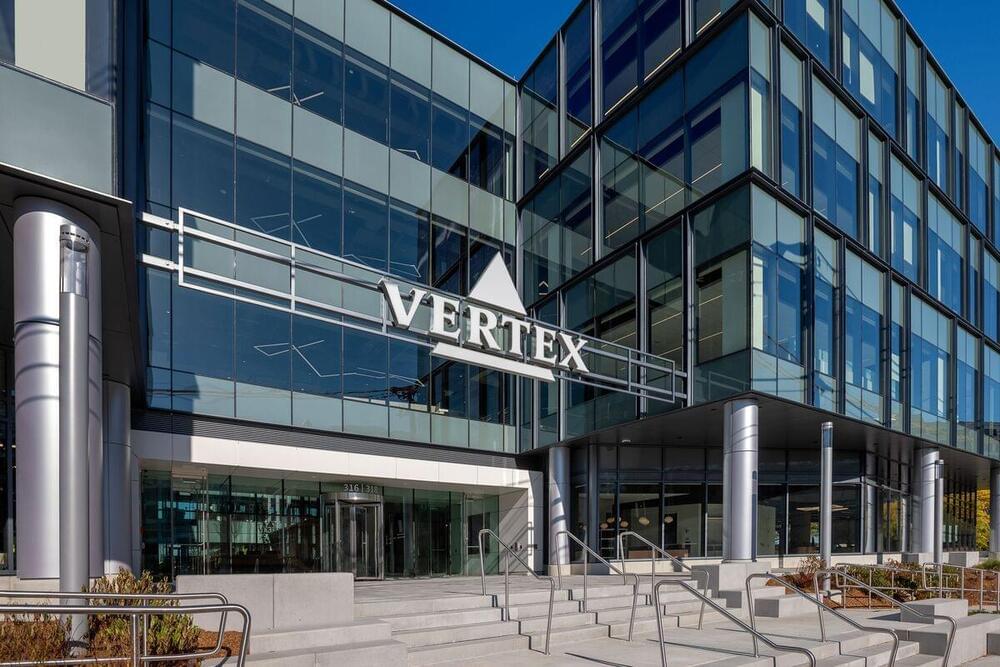Anna Lembke is professor of psychiatry at Stanford University School of Medicine and chief of the Stanford Addiction Medicine Dual Diagnosis Clinic. A clinician scholar, she has published more than a hundred peer-reviewed papers, book chapters, and commentaries.
Category: biotech/medical – Page 767
Controlling Addiction & Dopamine: A Practical Guide
Psychiatrist and author Dr. Anna Lembke discusses dopamine, addictive behaviors, warning signs and treatment for addiction, and how our brains handle all that pleasure and pain in life. Dr. Lembke is a professor of psychiatry at Stanford University School of Medicine and chief of the Stanford Addiction Medicine Dual Diagnosis Clinic. She appeared in the 2020 Netflix documentary The Social Dilemma to discuss the addictive nature of social media, and she is the author of the 2021 New York Times bestseller Dopamine Nation: Finding Balance in the Age of Indulgence, which explores how to moderate compulsive overconsumption in a dopamine-overloaded world.
Beyond Consciousness: How Meditators Voluntarily Enter Void States
Summary: Experienced meditators can voluntarily induce unconscious states, known as cessations, without the use of drugs. This ability, observed in Tibetan Buddhist practice, allows meditators to experience a momentary void of consciousness, followed by enhanced mental clarity.
Conducted across multiple countries, the study utilized EEG spectral analysis to objectively measure brain activity during these cessation events. By correlating the meditator’s first-person experience with neuroimaging data, researchers have gained insights into the profound modulation of consciousness achievable through advanced meditation practices.
Avoiding The Age-Related Increase For Blood Pressure
Join us on Patreon! https://www.patreon.com/MichaelLustgartenPhDDiscount Links: Epigenetic, Telomere Testing: https://trudiagnostic.com/?irclickid=U-s3Ii2r7x…

Unstable ‘fluttering’ predicts aortic aneurysm with 98% accuracy
Northwestern University researchers have developed the first physics-based metric to predict whether or not a person might someday suffer an aortic aneurysm, a deadly condition that often causes no symptoms until it ruptures.
In the new study, the researchers forecasted abnormal aortic growth by measuring subtle “fluttering” in a patient’s blood vessel. As blood flows through the aorta, it can cause the vessel wall to flutter, similar to how a banner ripples in the breeze. While stable flow predicts normal, natural growth, unstable flutter is highly predictive of future abnormal growth and potential rupture, the researchers found.
Called the “flutter instability parameter” (FIP), the new metric predicted future aneurysm with 98% accuracy on average three years after the FIP was first measured. To calculate a personalized FIP, patients only need a single 4D flow magnetic resonance imaging (MRI) scan.

Fungus-fighting Protein could help Overcome Severe Autoimmune disease and Cancer
A protein in the immune system programmed to protect the body from fungal infections is also responsible for exacerbating the severity of certain autoimmune diseases such as irritable bowel disease (IBS), type 1 diabetes, eczema and other chronic disorders, new research from The Australian National University (ANU) has found.
The discovery could pave the way for new and more effective drugs, without the nasty side effects of existing treatments. In addition to helping to manage severe autoimmune conditions, the breakthrough could also help treat all types of cancer. The work has been published in Science Advances.
The scientists have discovered a previously unknown function of the protein, known as DECTIN-1, which in its mutated state limits the production of T regulatory cells or so-called ‘guardian’ cells in the immune system.


Vertex’s First Crispr Gene Editing Therapy Gets EU Backing
Europe’s health regulator followed the US and UK in backing the first gene-editing therapy to use Crispr technology, a Vertex Pharmaceuticals Inc. and Crispr Therapeutics AG treatment for sickle cell disease.
The European Medicines Agency’s expert panel recommended on Friday authorizing the Vertex and Crispr drug, Casgevy, for people with severe sickle cell disease and another serious hereditary blood disorder, beta-thalassemia, which is traditionally treated with repeated transfusions. Vertex said before the ruling that it had yet to establish a European list price for the one-time therapy, which costs $2.2 million in the US.
The treatment makes precisely targeted changes in patients’ DNA, a months-long process that requires removing bone marrow and a stem cell transplant. In Europe, Vertex said its initial focus will be on countries with the highest numbers of patients, including France, Italy, the UK and Germany.
Reducing the Cognitive Footprint of Brain Surgery — Michael Sughrue, MD
The Seattle Science Foundation is a not for profit organization dedicated to advancing the quality of patient care through education, research, innovation and technology. As a physician driven organization, we have created a trusted community of nationally recognized experts from the world’s best medical and academic institutions. \
\
SSFTV is the official YouTube channel of the Seattle Science Foundation. Subscribe now to be updated on the latest videos: tinyurl.com/yt8kt8mg.\
\
To join our upcoming meeting for CME credit, visit https://www.ssfcme.org.\
\
Get Social With SSF:\
On Instagram: / seattlesciencefoundation \
On Facebook: / seattlesciencefoundation \
On Twitter: / seattlescifdtn \
On LinkedIn: / 756,824 \
On YouTube: http://www.ssfyoutube.org\
\
All archived recorded lectures are available for informational purposes only and are only eligible for self-claimed Category II credit. They are not intended to serve as, or be the basis of a medical opinion, diagnosis, prognosis or treatment for any particular patient. The information was current at the time of the presentation.
Mastering Stress: Insights from Dr. Robert Sapolsky
Dr Robert Sapolsky is a Professor at Stanford University, a world-leading researcher, and an author. Stress is an inevitable part of human life. But what is stress actually doing to the human body when it happens for such a prolonged period of time? And what does science say are the best interventions to defeat it? Expect to learn the crucial difference between short term and long term stress, how stress actually impacts the human system, the neurodevelopmental consequences of stress and poverty, how to detrain your dopamine sensitivity, what everyone doesn’t understand about how hormones work, whether believing in free will is a useful world view, why there is a relationship between belief in free will and obesity and much more…